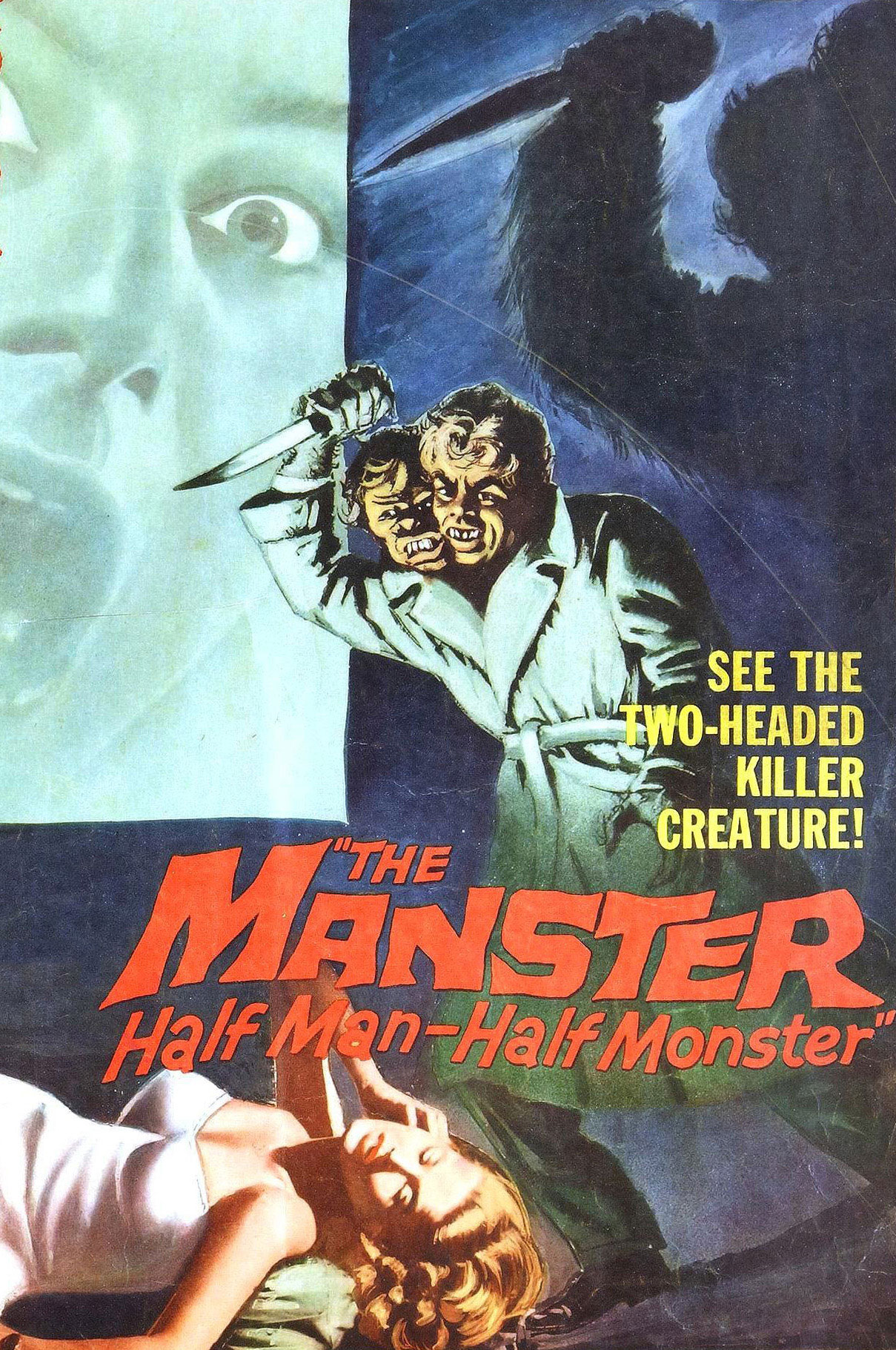With a name like The Manster, it has to be shit, right?
From 1959 (but kept on a shelf until 1962), The Manster is a shitty American monster flick that looks like a joint American/Japanese production. But, it’s not. The Manster is a 100% American production that just happened to be shot in Japan, with many Japanese actors and crew. I made a point while watching this flick to go into the tubes and find out if there was a Japanese-language version of this flick shot side-by-side with the American release, à la Dracula, but there was not. That feels like something of a missed opportunity, as Japanese shitty movie fans would enjoy this piece of trash, I’m sure.
Directed by George Breakston and Kenneth G. Crane, from a screenplay by William J. Sheldon, The Manster tells the story of wayward wire service reporter Larry Stanford (Peter Dyneley). He’s on assignment in Japan, and his last story before going back home is a writeup on the work of Dr. Robert Suzuki (Tetsu Nakamura), who, unbeknownst to Stanford and everyone else, is a mad scientist who is creating mutated monstrosities for no discernible purpose.
Mere minutes after first meeting Stanford, Suzuki doses him with a concoction that will precipitate a monstrous transformation. In order to keep Stanford close by, where he can observe the results of the transformation, Suzuki plays to Stanford’s basest desires. He exposes Stanford to an unending stream of saké and  geishas. Stanford gets so deep into the party that, a week after his tour in Japan ends, he still has yet to return home. It’s such a messy and foul situation that Stanford’s wife, Linda (Jane Hylton), flies all the way from New York to try and convince Stanford to come home.
geishas. Stanford gets so deep into the party that, a week after his tour in Japan ends, he still has yet to return home. It’s such a messy and foul situation that Stanford’s wife, Linda (Jane Hylton), flies all the way from New York to try and convince Stanford to come home.
By this time, Stanford is in the arms of Suzuki’s assistant, Tara (Terri Zimmern). She’s been helping Suzuki keep Stanford in Japan, but, like all good one-dimensional female characters of the day, she falls for Stanford and wants him to stay in Japan for real. Linda and Tara are competing for a real piece of work. A little booze, a little fun, and Stanford throws all promises and commitments aside. He’s a philandering drunk with a terrible work ethic, and his horrible behavior can’t be blamed on Suzuki’s serum, as his worst moral behavior came before the transformation.
Ah, yes, the transformation. Suzuki’s serum has an effect on our anti-hero, Jekyll and Hyde-ing him. In fits of rage, Stanford preys on innocent Japanese citizens in the night. The killings are frontpage news but he has no memory of events. His condition continues to deteriorate until denouement, when a ridiculous, and very satisfying, turn of events wraps the whole plot up. Potential viewers need to pay close attention to this finale, as the movie ends quicker than flicking a light switch.
This is the type of shitty movie that’s filled with bad acting from start to finish. The only performer who was worth a damn was Dyneley, and his character is repellant. The standout in futility was Hylton, whose performance was so stiff that it could have been used as an ironing board. It’s such an awful performance that it becomes one of the endearing aspects of the film.
Dyneley owns the show, however. In a film rife with shitty sets, shitty costumes, a shitty plot, and shitty performances, it’s Dyneley that makes it all worth watching for the shitty movie fan. His character is such a disgusting wretch that a viewer can’t help but root for all the awful stuff that happens to him. We stare in wonder as his abandoned wife fights for him over and over and over again. Why? Count yourself lucky, Linda. I honestly can’t tell what’s worse — Stanford the souse or Stanford the monster.
Either way, The Manster is a good shitty watch. It’s watchability rating is hurt by some somnambulistic sequences in the first and third acts, and also by this being more of a character study than a true monster flick, but it still breaks into the top half at #124. Look out, Prom Night II, there’s a new sheriff in town.
